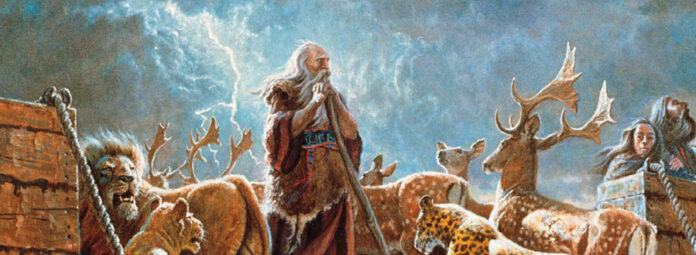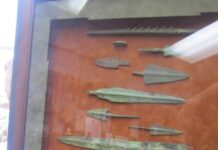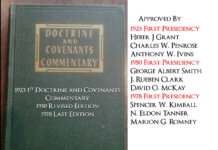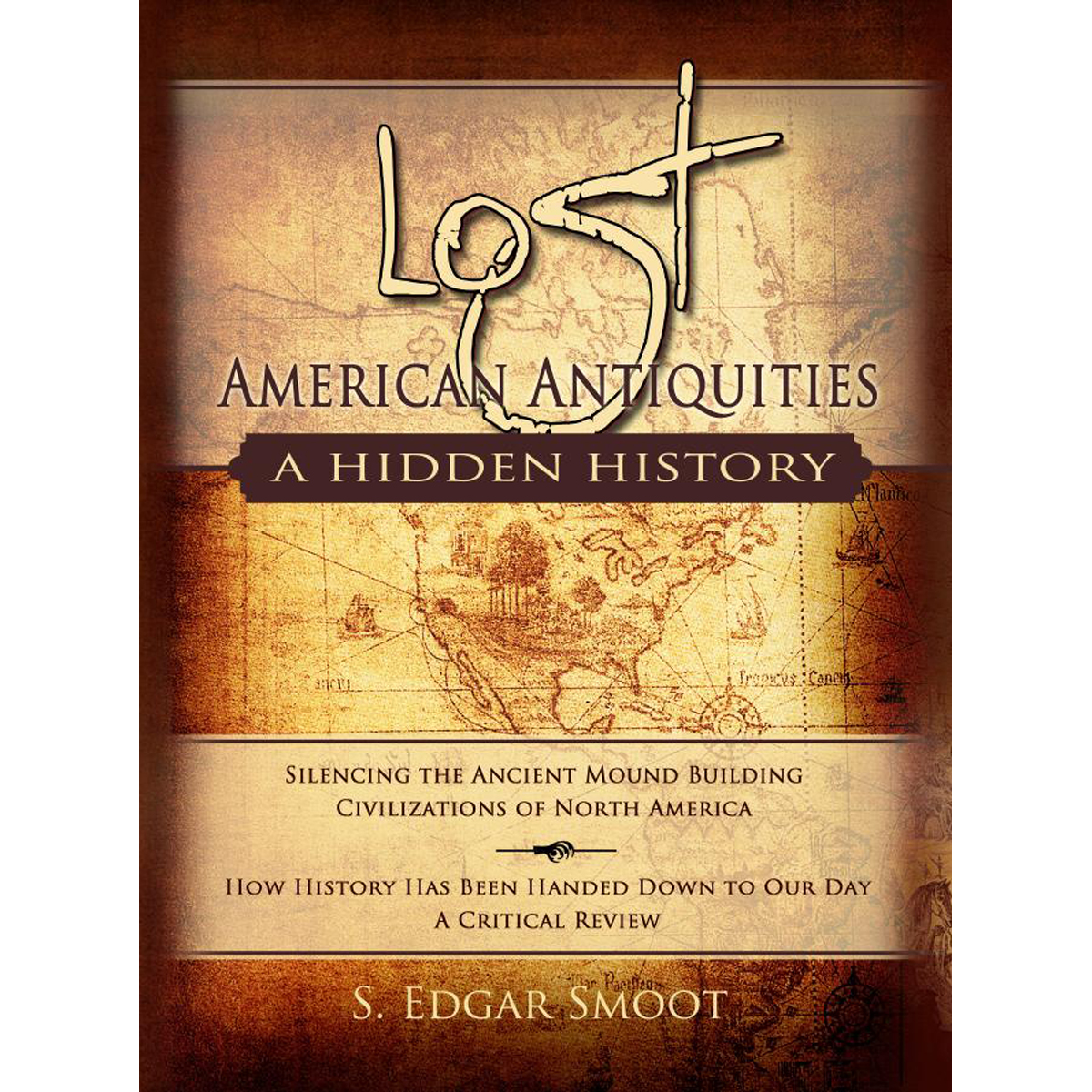
Was the Flood a Global or Local Flood? by Stephen O. Smoot
 “Modern believers are confronted with geological and other scientific evidence (in addition to the ancient literary context of Genesis) that casts serious doubt on the feasibility of a worldwide catastrophic flood sometime (presumably) around 3,000 BC that wiped out all animal and human life save that which was spared on Noah’s ark. In response to these challenges, some have wondered if perhaps the flood described in Genesis drew from memory of a localized event, perhaps a particularly bad flooding of the Tigris and Euphrates rivers. Given the somewhat ambiguous meaning of the Hebrew word eretz (“earth,” “land”), rather than the “earth” (meaning the spherical globe) being entirely flooded, instead perhaps Genesis meant to convey that the “earth” (meaning the land or local region where Noah dwelt) was inundated (Moses 1:29). Or perhaps a local flood was mythologized into a global one to symbolically signify the renewal or recreation of the earth from out of a primordial universal ocean (Genesis 1:2). Latter-day Saints have likewise wrestled with this question and have come to varying conclusions (some more traditionalist, others more moderate). Apostle John A. Widtsoe acknowledged in 1943 that from a revelatory point of view we simply do not know enough to conclusively settle this matter. “The fact remains that the exact nature of the flood is not known. We set up assumptions, based upon our best knowledge, but can go no further.” He continued: We should remember that when inspired writers deal with historical incidents they relate that which they have seen or that which may have been told them, unless indeed the past is opened to them by revelation.
“Modern believers are confronted with geological and other scientific evidence (in addition to the ancient literary context of Genesis) that casts serious doubt on the feasibility of a worldwide catastrophic flood sometime (presumably) around 3,000 BC that wiped out all animal and human life save that which was spared on Noah’s ark. In response to these challenges, some have wondered if perhaps the flood described in Genesis drew from memory of a localized event, perhaps a particularly bad flooding of the Tigris and Euphrates rivers. Given the somewhat ambiguous meaning of the Hebrew word eretz (“earth,” “land”), rather than the “earth” (meaning the spherical globe) being entirely flooded, instead perhaps Genesis meant to convey that the “earth” (meaning the land or local region where Noah dwelt) was inundated (Moses 1:29). Or perhaps a local flood was mythologized into a global one to symbolically signify the renewal or recreation of the earth from out of a primordial universal ocean (Genesis 1:2). Latter-day Saints have likewise wrestled with this question and have come to varying conclusions (some more traditionalist, others more moderate). Apostle John A. Widtsoe acknowledged in 1943 that from a revelatory point of view we simply do not know enough to conclusively settle this matter. “The fact remains that the exact nature of the flood is not known. We set up assumptions, based upon our best knowledge, but can go no further.” He continued: We should remember that when inspired writers deal with historical incidents they relate that which they have seen or that which may have been told them, unless indeed the past is opened to them by revelation. The details in the story of the flood are undoubtedly drawn from the experiences of the writer. Under a downpour of rain, likened to the opening of the heavens, a destructive torrent twenty-six feet deep or deeper would easily be formed. The writer of Genesis made a faithful report of the facts known to him concerning the flood. In other localities the depth of the water might have been more or less. In fact, the details of the flood are not known to us.” 5 Answers to Difficult Questions About Noah and the Flood by Stephen O. Smoot Complete Article here In my opinion the flood was real and a worldwide event. The scientists today are intellectualizing the creation, flood, age of man, evolution, global warming, and many other things that just don’t make sense.

Book of Mormon Central
Book of Mormon Central Science Concerns Author(s): Michael R. Ash Self-Published, 2015 Pages: 79-8075) (75) The Bible and LDS scriptures teach that there was no death before the fall.
Answer: There is no official doctrine regarding the antiquity or creation of the Earth or life on Earth.
We know that much of what we read in the scriptures is allegorical or symbolic. Many LDS believe in both Adam and Eve and that science is correct regarding the progression of life on Earth. Ancient societies (as well as modern societies) understood God’s revelations as well as His creations from within a context of their worldviews (here we go again… their “language”). Some Biblical scholars (such as non-LDS John Walton) argue that the creation account of Genesis is based on—what he calls—a functional creation. When we “create” a committee we are not creating a physical structure but rather organizing things (in the case of a committee those “things” would be people) to populate and steward the organization. Those who wrote the Old Testament believed that the creation was an on-going process an enterprise in which we are intimately involved—just like a committee continues to function long after it’s “created.” Instead of seeing the creation accounts like modern people read them today (as creating a product with an Erector Set), ancient peoples “believed that something existed not by virtue of its material properties, but by virtue of its having a function in an ordered system.”35 “Creation,” notes Dr. Walton, “thus constitutes bringing order to the cosmos from an originally nonfunctional condition…. Consequently, to create something (cause to exist) in the ancient world means to give it function, not material properties.”36 The function of creation was to give order, roles, organization, and jurisdiction to the cosmos—which includes Earth and all life. The story in Genesis described the organizational powers between us and God while setting a pattern to guide us in our relationship with the divine. Dr. Walton explains that the creation of Adam and Eve has archetypal significance and they stand as representations for all of God’s children. Humankind is connected to the ground from which we are drawn. Womankind is connected to mankind from whom she is drawn. In both male and female forms, humankind is connected to God in whose image all are made. As such they have the privilege of procreation, the role of subduing and ruling, and a status in the garden serving sacred space (Gen 2: 15)…. Neither the materials nor the roles are descriptive only of the first individuals. This creation account gives people their identity and specifies their connectivity to everything around them.37 By understanding that the scriptures are not meant to reveal the scientific and mechanical workings of the universe we are free to accept or reject pre-Adamites, evolution, and death before the fall, based on intellectual arguments instead of from a position that assumes we have infallible 80 scriptures and infallible ancient prophets.
Those who wrote the Old Testament believed that the creation was an on-going process an enterprise in which we are intimately involved—just like a committee continues to function long after it’s “created.” Instead of seeing the creation accounts like modern people read them today (as creating a product with an Erector Set), ancient peoples “believed that something existed not by virtue of its material properties, but by virtue of its having a function in an ordered system.”35 “Creation,” notes Dr. Walton, “thus constitutes bringing order to the cosmos from an originally nonfunctional condition…. Consequently, to create something (cause to exist) in the ancient world means to give it function, not material properties.”36 The function of creation was to give order, roles, organization, and jurisdiction to the cosmos—which includes Earth and all life. The story in Genesis described the organizational powers between us and God while setting a pattern to guide us in our relationship with the divine. Dr. Walton explains that the creation of Adam and Eve has archetypal significance and they stand as representations for all of God’s children. Humankind is connected to the ground from which we are drawn. Womankind is connected to mankind from whom she is drawn. In both male and female forms, humankind is connected to God in whose image all are made. As such they have the privilege of procreation, the role of subduing and ruling, and a status in the garden serving sacred space (Gen 2: 15)…. Neither the materials nor the roles are descriptive only of the first individuals. This creation account gives people their identity and specifies their connectivity to everything around them.37 By understanding that the scriptures are not meant to reveal the scientific and mechanical workings of the universe we are free to accept or reject pre-Adamites, evolution, and death before the fall, based on intellectual arguments instead of from a position that assumes we have infallible 80 scriptures and infallible ancient prophets.
76) Science has proven that there was no worldwide flood.
Answer: There is no official doctrine regarding the scope or depth of Noah’s flood. Many LDS believe that the flood was localized—to Noah, the “earth” (and this is supported by how the word is used in Hebrew) would have referred to the land in his vicinity. Noah would not have known about the earth in a global sense (as we do today). If everything he saw was underwater, to his world the “earth” would have been flooded.
77) Science discredits the Bible.
Answer: The Bible is not a history book or a science book and doesn’t claim to be. Ancient cultures had a much different view of literature than we have today. God did not (and does not) reveal every detail of every scientific or historical fact to every prophet (there is no need for such revelations). Biblical authors had pre-scientific worldviews and wrote according to how they understood things in their day. As Galileo said, paraphrasing Cardinal Baronius (the Vatican’s librarian), the intent of scripture is “to teach us how one goes to heaven, not how heaven goes.”38 https://archive.bookofmormoncentral.org/sites/default/files/archive-files/pdf/ash/2019-10-09/13_science_concerns.pdf https://archive.bookofmormoncentral.org/sites/default/files/archive-files/pdf/ash/2016-08-10/bamboozled-by-the-ces-letter-final1.pdf https://archive.bookofmormoncentral.org/sites/default/files/archive-files/pdf/ash/2016-08-10/bamboozled-by-the-ces-letter-final1.pdf Book of Mormon Central Science Concerns Author(s): Michael R. Ash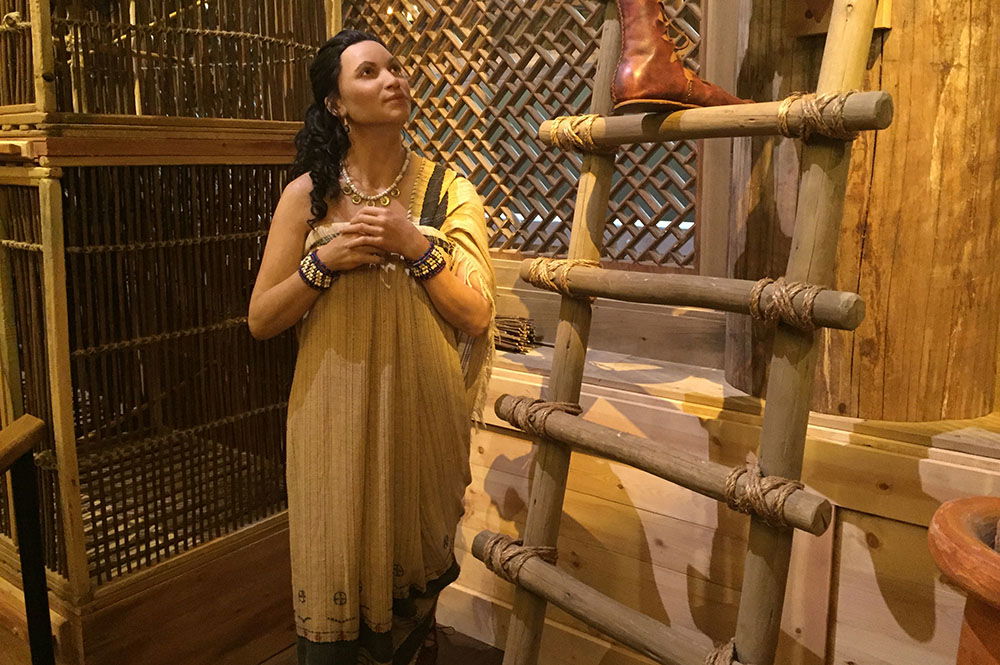
Joseph Smith Foundation Commentary
Firm Foundation and Rian Nelson support the information from the Joseph Smith foundation and believe strongly that the great flood was universal and it actually happened. Truth not a myth.
“. . . the story is ignored as childish nonsense in most of the academic world, given no more attention nor validity than Grimm’s fairy tales.” [1]
“Can one really fit ten million species onto a single ocean-going vessel, feed and care for them all with their often very restrictive diets or living conditions (many of which we are helpless to duplicate even with modern systems), and keep it all going with just eight people for an entire year? The answer, plainly, is no.” [2]
“The Old Testament unfolds the story of the creation of the earth and mankind by God. Should we now disregard this account and modernize the creation according to the theories of the modernists? Can we say there was no Garden of Eden or an Adam and Eve? Because modernists now declare the story of the flood is unreasonable and impossible, should we disbelieve the account of Noah and the flood as related in the Old Testament?” [3]
“In this statement the Master confirmed the story of the flood without modernizing it. Can we accept some of the statements of the Lord as being true and at the same time reject others as being false?” [5]
“. . . as the days of Noah were, so shall also the coming of the Son of man be. . . . Then shall two be in the field; the one shall be taken, and the other left.” [6]
“How can we modernize the story of the flood, or refer to it as a myth, and yet cling to the truth of the [Atonement and Resurrection]? How can we modernize the Bible and still have it be a guiding light to us and a vital influence in our beliefs?” [7]
“There are those who declare it is old-fashioned to believe in the Bible. Is it old-fashioned to believe in Jesus Christ, the Son of the Living God? Is it old-fashioned to believe in His atoning sacrifice and the resurrection? If it is, I declare myself to be old-fashioned and the Church to be old-fashioned. In great simplicity, the Master taught the principles of life eternal and lessons that bring happiness to those with the faith to believe.” [8]

 In accepting Darwinism do we reject the scriptures, the prophets and historical records? What of the objections that the animals could not fit on the ark? Please see the lecture by Terry Mortenson entitled Noah’s Flood: Washing Away Millions of Years. What of scientific evidence? There is a mountain of evidence for the literal universal Flood. Nearly all geologists coming from a Biblical perspective find evidence for the Flood. One example is Steven Austin. Please see Mount St. Helens: Explosive Evidence for Catastrophe. Additionally, see the RATE team’s research in Thousands . . . Not Billions. To accept Darwinism must one reject the scriptures, the prophets, history and true science?
In accepting Darwinism do we reject the scriptures, the prophets and historical records? What of the objections that the animals could not fit on the ark? Please see the lecture by Terry Mortenson entitled Noah’s Flood: Washing Away Millions of Years. What of scientific evidence? There is a mountain of evidence for the literal universal Flood. Nearly all geologists coming from a Biblical perspective find evidence for the Flood. One example is Steven Austin. Please see Mount St. Helens: Explosive Evidence for Catastrophe. Additionally, see the RATE team’s research in Thousands . . . Not Billions. To accept Darwinism must one reject the scriptures, the prophets, history and true science?Prophetic Statements
Joseph Smith
In the days of Noah, God destroyed the world by a flood, and He has promised to destroy it by fire in the last days: but before it should take place, Elijah should first come and turn the hearts of the fathers to the children, etc. [9] Adam was made to open the way of the world, and for dressing the garden. Noah was born to save seed of everything, when the earth was washed of its wickedness by the flood; and the Son of God came into the world to redeem it from the fall. [10] [11]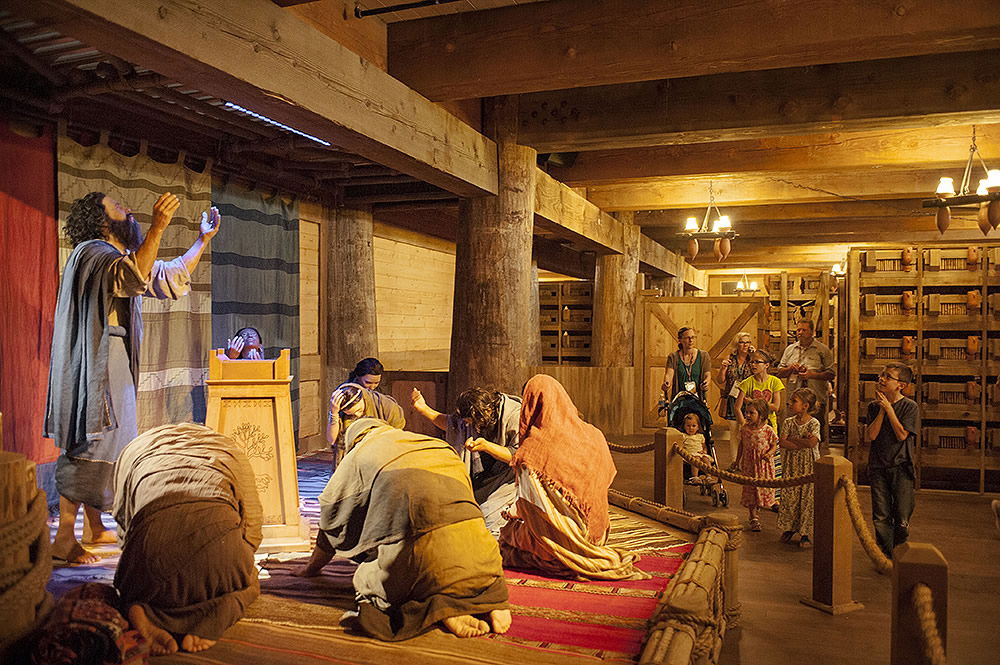
Brigham Young
If we read the requirements made by Jesus, by the Father, or by any messenger sent from the Heavens to the children of men we shall find nothing that will injure any human being or that will destroy the soul of one of the sons or daughters of Adam and Eve. . . . The world may in vain ask the question, “Who are we?” But the Gospel tells us that we are the sons and daughters of that God whom we serve. Some say, “We are the children of Adam and Eve.” So we are, and they are the children of our Heavenly Father. We are all the children of Adam and Eve, and they and we are the offspring of Him who dwells in the heavens, the highest Intelligence that dwells anywhere that we have any knowledge of. . . . What are His commandments to us? Has He commanded us to build an ark? No. He told Noah to do that for the salvation of those who would go into it; and after he had built it, and had preached righteousness for a long space of time, warning the people of the coming judgments of the Almighty, how many believed his testimony? Only eight souls, and they were members of his own family. All the rest were swept from the face of the earth. This is according to the account given to us in the Old Testament which we believe. I know that there are a great many in the world who are so wise in their own eyes that they are not disposed to believe the account contained in the Bible of the Creation, of Adam and Eve in the Garden of Eden, the antediluvian world and other things, but we profess to believe, and we do or should believe these things. [12] [God] told Noah to [build an ark] for the salvation of those who would go into it; and after he had built it, and had preached righteousness for a long space of time, warning the people of the coming judgments of the Almighty, how many believed his testimony? Only eight souls, and they were members of his own family. All the rest were swept from the face of the earth. This is according to the account given to us in the Old Testament which we believe. I know that there are a great many in the world who are so wise in their own eyes that they are not disposed to believe the account contained in the Bible of the Creation, of Adam and Eve in the Garden of Eden, the antediluvian world and other things, but we profess to believe, and we do or should believe these things. [13] There is a passage of Scripture that reads thus:—”For whom he did foreknow, he also did predestinate to be conformed to the image of his Son, that he might be the firstborn among many brethren,” &c. Whom did he not foreknow? I do not think there is anybody now on the earth, or that has lived before us, or that will come after us, but what he knew. He knew who would be his anointed; he has had his eye upon them all the time, as he had upon Moses, Pharaoh, Abraham, Melchizedek, and Noah, who was a chosen vessel to build the ark and save a remnant from the flood. Did you ever hear the story of an old man that came to Noah when he was building the ark? “What, Mr. Noah, are you still at the ark? You are a veritable old fool, building an ark far away from any water! How are you going to float it?” “Wait a little while, and I will show you: by-and-by the Lord will break up the might deep and send forth the waters and drown the wicked.” “Oh, you are a fool, Noah! You had better build a good house, and plant and till the earth. I am going home,” &c. “Go on,” said Noah; “by-and-by you will learn that I am right.” They waited year after year, and by-and-by the fountains of the great deep were broken up, and the rain began to descend. The old man came along, and Noah said to him, “What do you think now, neighbour?” “Oh, this is only a shower; it looks like clearing up; it will soon be over.” In a short time the old man came again, wading in water to his knees, when Noah said, “Well, what do you think now?” “Oh, it will soon clear away.” He came again, and that time he was paddling along in water up to his neck, and said, “Won’t you take me in, Noah?” “I have got my load; all who have received tickets are aboard, and those who have not tickets cannot come aboard. What do you think of it now, old man, is it only a little shower?” Then it was not, “Damn old Noah!” but they were crying, “Oh, Mr. Noah, take us in.” [14] Marvel not that the kingdom of God is not in its fulness. Marvel not that you see every man and woman subject to the passions that belong to fallen nature. There never was a Prophet on the earth but what was subject to passions, as we are. Every son and daughter of Adam that has come into this world has been subject to sin, and prone to wander. . . . When we have streets paved with gold, we will have placed it there ourselves. When we enjoy a Zion in its beauty and glory, it will be when we have built it. If we enjoy the Zion that we now anticipate, it will be after we redeem and prepare it. If we live in the city of the New Jerusalem, it will be because we lay the foundation and build it. If we do not as individuals complete that work, we shall lay the foundation for our children and our children’s children, as Adam has. If we are to be saved in an ark, as Noah and his family were, it will be because we build it. [15] The earth, the Lord says, abides its creation; it has been baptized with water, and will, in the future, be baptized with fire and the Holy Ghost, to be prepared to go back into the celestial presence of God, with all things that dwell upon it which have, like the earth, abided the law of their creation. [16] This earth in its present condition and situation, is not a fit habitation for the sanctified; but it abides the law of its creation, has been baptized with water, will be baptized by fire and the Holy Ghost, and by-and-by will be prepared for the faithful to dwell upon.” [17] By Joseph Smith Foundation- ↑ Duane E. Jeffery, Noah’s Flood: Modern Scholarship and Mormon Traditions
- ↑ Duane E. Jeffery, Noah’s Flood: Modern Scholarship and Mormon Traditions
- ↑ Howard W. Hunter, That We Might Have Joy [Salt Lake City: Deseret Book Co., 1994], p. 22
- ↑ Matthew 24:36-39
- ↑ Id., at p. 23
- ↑ Matthew 24:36, 41
- ↑ Howard W. Hunter, That We Might Have Joy [Salt Lake City: Deseret Book Co., 1994], p. 23.
- ↑ Ibid.
- ↑ Joseph Smith, Teachings of the Prophet Joseph Smith, selected and arranged by Joseph Fielding Smith [Salt Lake City: Deseret Book Co., 1976], 337.
- ↑ Joseph Smith, Teachings of the Prophet Joseph Smith, selected and arranged by Joseph Fielding Smith [Salt Lake City: Deseret Book Co., 1976], 12.
- ↑ History of the Church 1:283
- ↑ Brigham Young, Journal of Discourses, 26 vols. [London: Latter-day Saints’ Book Depot, 1854-1886], 13: 312
- ↑ Brigham Young, Journal of Discourses, 13: 314
- ↑ Brigham Young, Journal of Discourses, 26 vols. [London: Latter-day Saints’ Book Depot, 1854-1886], 8: 229 – 230
- ↑ President Brigham Young, Journal of Discourses, 26 vols. [London: Latter-day Saints’ Book Depot, 1854-1886], 8: 352 – 353
- ↑ Brigham Young, Discourses of Brigham Young, selected and arranged by John A. Widtsoe [Salt Lake City: Deseret Book Co., 1954], 393.
- ↑ Brigham Young, Discourses of Brigham Young, selected and arranged by John A. Widtsoe [Salt Lake City: Deseret Book Co., 1954], 102.

“Because of the Prophet Joseph Smith, Latter-day Saints have additional knowledge that confirms the reality of these world-changing historical events.
The Flood
Many of us have fond memories learning about Noah and his ark during our days at home and in Primary. Perhaps our parents and teachers held up a picture of Noah preaching to laughing and mocking people as he stood in front of the partially built ark, or perhaps they showed us a picture portraying the ark filled with animals standing on the deck as the great vessel rested in the water. Later, our Sunday School or seminary teachers added to our knowledge of this great man, his righteousness, his missionary work, and the revelations surrounding the building of the ark. As Latter-day Saints, we treasure this sacred, true account of one of God’s great prophets who lived so long ago.
Not everyone throughout the modern world, however, accepts the story of Noah and the Flood. Many totally disbelieve the story, seeing it as a simple myth or fiction. Typical of some modern scholars, one author recently discounted the events of the Flood by using such terms as “implausible,” “unacceptable,” and “impossible”; he stated that believers who would hope to provide geologic or other evidence regarding the historicity of the Flood “can be given no assurance that their effort, however sustained, will be successful.” Another author titled his book The Noah’s Ark Nonsense, revealing his disbelief that the Flood actually took place.
Still other people accept parts of the Flood story, acknowledging that there may have been a local, charismatic preacher, such as Noah, and a localized flood that covered only a specific area of the world, such as the region of the Tigris and Euphrates Rivers or perhaps even the whole of Mesopotamia. Yet these people do not believe in a worldwide or global flood. Both of these groups—those who totally deny the historicity of Noah and the Flood and those who accept parts of the story—are persuaded in their disbelief by the way they interpret modern science. They rely upon geological considerations and theories that postulate it would be impossible for a flood to cover earth’s highest mountains, that the geologic evidence (primarily in the fields of stratigraphy and sedimentation) does not indicate a worldwide flood occurred any time during the earth’s existence.
There is a third group of people—those who accept the literal message of the Bible regarding Noah, the ark, and the Deluge. Latter-day Saints belong to this group. In spite of the world’s arguments against the historicity of the Flood, and despite the supposed lack of geologic evidence, we Latter-day Saints believe that Noah was an actual man, a prophet of God, who preached repentance and raised a voice of warning, built an ark, gathered his family and a host of animals onto the ark, and floated safely away as waters covered the entire earth. We are assured that these events actually occurred by the multiple testimonies of God’s prophets.
Scriptural Evidence for a Worldwide Flood
Many prophets from two different continents and different eras have identified Noah as a historical, not a mythical, character. These include Enoch (see Moses 7:42–43), Abraham (see Abr. 1:19), Amulek (see Alma 10:22), Moroni (see Ether 6:7), Matthew (see JS—M 1:41–42), Peter (see 2 Pet. 2:5), Joseph Smith (see D&C 84:14–15; D&C 133:54), and Joseph F. Smith (see D&C 138:9, 41). The Lord Jesus Christ himself spoke to the Nephites of the “waters of Noah” (3 Ne. 22:9). Recent latter-day prophets and apostles have similarly spoken of Noah. For example, Elder Howard W. Hunter, then of the Quorum of the Twelve Apostles, asked, “Because modernists now declare the story of the flood is unreasonable and impossible, should we disbelieve the account of Noah and the flood as related in the Old Testament?”
 The most voluminous scriptural witness to Noah and the Flood is recorded in the writings of Moses, who dedicated a total of 57 verses in the King James Version to the account (Gen. 6:9–8:19). It is instructive to note that some of Noah’s actual words are preserved in the book of Moses, which introduces them with “And it came to pass that Noah continued his preaching unto the people, saying”—followed by his words: “Hearken, and give heed unto my words; Believe and repent of your sins and be baptized in the name of Jesus Christ, the Son of God, even as our fathers, and ye shall receive the Holy Ghost, that ye may have all things made manifest; and if ye do not this, the floods will come in upon you” (Moses 8:23–24). This text is significant in that it confirms that Noah, like his predecessors, understood the gospel covenant, including the baptismal ordinance and Jesus Christ’s role as Savior.
The most voluminous scriptural witness to Noah and the Flood is recorded in the writings of Moses, who dedicated a total of 57 verses in the King James Version to the account (Gen. 6:9–8:19). It is instructive to note that some of Noah’s actual words are preserved in the book of Moses, which introduces them with “And it came to pass that Noah continued his preaching unto the people, saying”—followed by his words: “Hearken, and give heed unto my words; Believe and repent of your sins and be baptized in the name of Jesus Christ, the Son of God, even as our fathers, and ye shall receive the Holy Ghost, that ye may have all things made manifest; and if ye do not this, the floods will come in upon you” (Moses 8:23–24). This text is significant in that it confirms that Noah, like his predecessors, understood the gospel covenant, including the baptismal ordinance and Jesus Christ’s role as Savior.
Moses may have received his information about Noah through direct revelation, or perhaps he used ancient records that were written by one of the eyewitnesses to the Flood, such as Noah himself or one of his sons. Such records, presuming they once existed, are now lost to the world. In the book of Genesis, Moses clearly states that a flood occurred, and the terminology definitely refers to a worldwide flood, as opposed to a localized flood. The Joseph Smith Translation backs up the Genesis account, modifying the wording only slightly.
Said the Lord, “I, even I, do bring a flood of waters upon the earth, to destroy all flesh, wherein is the breath of life, from under heaven; and every thing that is in the earth shall die” (Gen. 6:17; emphasis added in this and other scriptures in this article). The phrases “all flesh … from under heaven” and “every thing that is in the earth” indicate a worldwide destruction of all creatures that lived on land. Note that the Inspired Version, translated by the Prophet Joseph Smith, changes “in the earth” to “on the earth” (JST, Gen. 8:22).
Genesis 7:19–20 [Gen. 7:19–20] states, “All the high hills, that were under the whole heaven, were covered … ; and the mountains were covered.” These verses explicitly state that all of earth’s high mountains (“hills” should read “mountains” here; Hebrew harim) were covered by the waters. Lest one believe that the statement “under the whole heaven” is figurative and can be read or interpreted in different ways, a scriptural search through the entire Old Testament reveals that the phrase is used elsewhere only in a universal sense, as it is here; the phrase does not refer to a geographically restricted area (see Deut. 2:25; Deut. 4:19; Job 28:24; Job 37:3; Dan. 9:12). For instance, Job 28:24 also uses the phrase when referring to God’s omniscience, which is certainly not restricted to a specific geographical region on the earth.
Genesis 7:21 [Gen. 7:21] states, “All flesh died that moved upon the earth, … every creeping thing … every man.” The phrase “all flesh” refers to all land animals, creeping things, and fowls and all of humanity, with the exception of those in the ark (see Gen. 7:23). The entry every in the Oxford American Dictionary reads: “each single one, without exception.” Moses is clearly trying to let us understand that the Flood was universal.
Verse 22 [Gen. 7:22] states, “All in whose nostrils was the breath of life, of allthat was in the dry land, died.” Again the term “all” expresses a sum total. The term “dry land” should be read literally here, having reference to the land masses of our planet.
Verse 23 [Gen. 7:23] states, “Every living substance was destroyed which was upon the face of the ground, both man, and cattle, and the creeping things, and the fowl.” Moses’ list of those destroyed by the Flood is inclusive; only Noah “remained alive, and they that were with him in the ark.”
Genesis 8:5 [Gen. 8:5] states, “In the tenth month … were the tops of the mountains seen.” After the flood, the “waters decreased” until Noah and his group were able to once again see mountaintops.
Verse 9 states, “The waters were on the face of the whole earth.” The phrase “on the face of the whole earth” refers to a worldwide flood (see Gen. 1:29; Gen. 11:4, 8, 9).
Taken altogether, these statements should convince every believer in the Bible that the great Deluge was a worldwide event, not a localized flood that filled only the Mesopotamian or some other region.
Uniformitarianism
Some cite geological data to argue against the Flood. The issue for them, perhaps, revolves around the concept of uniformitarianism, which has been described simply in this way: “The present is the key to the past.” Uniformitarianism, first postulated by James Hutton in 1795, proposes three primary concepts: (a) there were no processes (such as geologic processes) operating in the past which are not operating now; (b) there are no processes operating now which were not operating in the past; and (c) process rates have not changed. Because modern scientists observe geologic change to be relatively slow now, many have naturally concluded that geologic processes have always been slow. Yet uniformitarianism, a premise on which much of geologic science is based, is an idea, not a fact. With our limited knowledge, it presently is a powerful paradigm for examining the earth, and given our ignorance of how the Lord has done things, it does help explain many things. The science that uses the idea has found for us such things as gas, oil, and certain types of minerals.
Yet although uniformitarianism is a powerful perspective, it is still a premise, not a fact. Uniformitarianism cannot explain all of the oddities and anomalies about the earth. Further, it neglects a God who can speak and have the dust of the earth obey, who can move mountains at will, and who can divide the Red Sea. As Latter-day Saints, we have scriptural evidence that God has intervened in the affairs of the earth and modified the landscape on numerous occasions. Among other things, he changed the earth’s environment after the Fall, he gave Enoch power to move mountains and rivers before the Deluge, he caused the Flood, and he was the cause of the catastrophic events in America at the Savior’s death.
For Latter-day Saints, the Flood is a matter of faith and belief. We believe in many events that today we cannot scientifically explain. For example, in a world where change and death are the norm, the scriptures promise immortality and eternal life. Indeed the scriptures teach that this earth will be burned (see 2 Pet. 3:10), receive a resurrection (D&C 88:26), and become a celestial kingdom (D&C 88:17–18). Such future events will make the incident of the Flood look like child’s play in comparison.
Further, with all of the advancements of science in recent decades, we still cannot explain how angels are able to defy gravity and descend or ascend through a building’s ceiling (see JS—H 1:43); how rapid interplanetary travel is possible for heavenly beings (see D&C 130:6–7); how a righteous man can raise the dead using God’s power (see 1 Kgs. 17:17–23); how heavenly messengers can appear to mortals (see D&C 110:2, 11–13); or how Jesus Christ’s divine sacrifice is able to atone for our sins.
Though we cannot yet explain the physics or dynamics behind those events, we look forward to the time when the Lord will come and explain them. In the Millennium—a time of great physical change in the earth—he will “reveal all things—
“Things which have passed, and hidden things which no man knew, things of the earth, by which it was made, and the purpose and the end thereof—
“Things most precious, things that are above, and things that are beneath, things that are in the earth, and upon the earth, and in heaven” (D&C 101:32–34).
The Tower of Babel
The account of the tower of Babel, presented in Genesis 11:1–9 [Gen. 11:1–9], is another account about which many persons in the world today disbelieve. It is an account of some of Noah’s descendants who set aside true temple worship and built a “pagan temple,” or “counterfeit temple,” in the form of a great tower. Two statements hint at an attempt to build a temple: “Let us build … a tower, whose top may reach unto heaven” (4) recalls one of the purposes of temples: to serve as places where God and man can meet. “Let us make us a name” (Gen. 11:4) recalls another purpose of temples: to serve as holy places where individuals take upon themselves the name of Jesus Christ. But the rebellious people under the leadership of King Nimrod lacked real priesthood keys and the authority to build temples; they lacked the divine power to make sacred covenants in the Lord’s name. Other parallels have been made between the tower of Babel and the Lord’s temple, both in antiquity and in our times, helping Latter-day Saints, more than any other people on earth, to understand what those in Babel were vainly attempting to duplicate.
The tower of Babel had a momentous impact on the events of world history, occurring not too long after the Flood and immediately before the confusion of tongues. The confusion of tongues came as a curse from the Lord because of the wicked people’s attempt to build the counterfeit temple, or tower, as Moses explained (Gen. 11:5–7). Before the tower, “the whole earth was of one language, and of one speech” (Gen. 11:1), but the building of the tower brought the Lord’s decision to confuse the tongues so the people could “not understand one another’s speech” (Gen. 11:7), preventing further defilement of the Lord’s sacred ordinances. The curse, in addition, resulted in the scattering of the people “upon the face of the whole earth,” a phrase given three different times for emphasis (see Gen. 11:4, 8, 9).
The Akkadian or Babylonian word babel means “gate of God.” The word translates from Hebrew into English as “confusion” or “confound”—hence Moses’ text, “Therefore is the name of it called Babel; because the Lord did there confound the language of all the earth” (Gen. 11:9).
For some in the modern world, the historicity of the tower of Babel story, as with the Flood, is often discounted. One modern school of thought considers the account to be nothing more than an “artful parable” and an “old tale.”But Latter-day Saints accept the story as it is presented in Genesis. Further, we have the second witness of the Book of Mormon. The title page of the Book of Mormon explains that the book of Ether “is a record of the people of Jared, who were scattered at the time the Lord confounded the language of the people, when they were building a tower to get to heaven.” The book of Ether itself then tells of when “Jared came forth with his brother and their families, with some others and their families, from the great tower, at the time the Lord confounded the language of the people, and swore in his wrath that they should be scattered upon all the face of the earth” (Ether 1:33).
Principles and Lessons for Our Time
The stories of the tower of Babel and the Flood present a number of doctrinal principles and applications for Latter-day Saints today. With reference to the tower of Babel, we find the following interesting observations and parallels for our day:
-
Every time we hear foreign tongues (including English), we can be reminded that at one time “the whole earth was of one language, and of one speech” (Gen. 11:1). The hundreds of languages on the earth today stand as a witness that there existed long ago a tower of Babel in the land of Shinar.
Yet in spite of the confusion of tongues so long ago, the gospel of Jesus Christ is reversing the effects of Babel. In the context of a temple dedication, Elder Spencer W. Kimball taught: “someone said yesterday, there never should have been a Babel. There having been a Babel, it is in reverse now. The confusion of Babel is being overcome. The Finns and the Dutch and the British, the Germans and the French and the Hollanders, the Scandinavians, Italians, Austrians all meeting under one roof! All of them heard the voice of the prophet of the Lord. Everyone of them heard his message in his own tongue. Everyone of them heard the ordinances of the gospel, the ordinances of the temple, in his own tongue. The confusion of Babel is in reverse.”
-
Because of her great iniquity, ancient Babel, or Babylon, has become a long-standing scriptural symbol for “wickedness” (see D&C 133:14). Specifically, Babylon represents any people who “have strayed from mine [the Lord’s] ordinances, and have broken mine everlasting covenant;
“They seek not the Lord to establish his righteousness, but every man walketh in his own way, and after the image of his own god, whose image is in the likeness of the world, and whose substance is that of an idol, which waxeth old and shall perish in Babylon, even Babylon the great, which shall fall” (D&C 1:15–16).
In antiquity, Babylon attempted to imitate Zion, attempting to replace the temple with its great tower, and Babylon’s false gods were substitutes for the Lord God. Unfortunately, Babylon has not changed in time.
-
The word “scatter[ed]” is found three times in the story of the tower (Gen. 11:4, 8–9). Nations are scattered as the result of wickedness. The opposite of scattering is gathering, and this dispensation is the era for gathering. The rebellious people who followed Nimrod were scatteredfrom Babel, and in our dispensation the Lord’s people are to gather from Babel, or Babylon: “Gather … upon the land of Zion. … Go ye out from Babylon. … Go ye out of Babylon; gather ye out from among the nations, from the four winds, from one end of heaven to the other. … Go ye outfrom among the nations, even from Babylon, from the midst of wickedness, which is spiritual Babylon” (D&C 133:4–7, 14).
In addition to carefully studying scriptural teachings related to the tower of Babel, a study of the Flood and the last days provides valuable instruction for us:
-
Those who hearkened unto the prophet Noah’s voice and repented were baptized and received the Holy Ghost and obtained a spiritual and a “temporal salvation” (Moses 7:42). Likewise, those who follow the prophets in this dispensation, from the Prophet Joseph Smith to President Gordon B. Hinckley, and who accept the Lord Jesus Christ and repent of their sins, will be saved.
-
Noah’s contemporaries “sought his life” (Moses 8:26); “every man was lifted up in the imagination of the thoughts of his heart, being only evil continually” (Moses 8:22); they failed to hearken unto the words of their prophet (Moses 8:24); and they were guilty of riotous living, described as “eating and drinking, and marrying and giving in marriage” (Moses 8:21). The evil deeds and same type of lifestyle that belonged to people in Noah’s time are being repeated in our own day and will be present at the time of the Second Coming, as the Savior himself prophesied (see Matt. 24:37–39).
-
The disobedient of Noah’s day reveled “until the day that [Noah] entered into the ark, and knew not until the flood came, and took them all away” (Matt. 24:38–39). Similarly, the wicked at the last days will not know of the destruction at Christ’s coming until it comes and destroys them all as did the Flood. The Savior taught: “But as it was in the days of Noah, so it shall be also at the coming of the Son of Man” (JS—M 1:41).
-
Latter-day prophets teach that the Flood or the total immersion of the earth in water represents the earth’s required baptism. Elder John A. Widtsoe of the Quorum of the Twelve Apostles explained: “Latter-day Saints look upon the earth as a living organism, one which is gloriously filling ‘the measure of its creation.’ They look upon the flood as a baptism of the earth, symbolizing a cleansing of the impurities of the past, and the beginning of a new life. This has been repeatedly taught by the leaders of the Church. The deluge was an immersion of the earth in water.” He writes that the removal of earth’s wicked inhabitants in the Flood represents that which occurs in our own baptism for the remission of sins.
-
The destruction of the disobedient at Noah’s time anticipates the devastation of the wicked at the time of Christ’s coming in glory, when the earth will receive its baptism by fire. The Prophet Joseph Smith taught, “In the days of Noah, God destroyed the world by a flood, and He has promised to destroy it by fire in the last days.” The prophet Enoch saw in vision Noah’s ark, seeing “that the Lord smiled upon it, and held it in his own hand; but upon the residue of the wicked the floods came and swallowed them up” (Moses 7:43). Likewise, the Lord has said that he will smile upon or uphold the obedient in the last days, while at the same time smiting the wicked with his judgments.
Thus, although there are many in our day who consider the accounts of the Flood and tower of Babel to be fiction, Latter-day Saints affirm their reality. We rejoice in the many truths and lessons to be learned from these two accounts, as well as from all the stories of the Old Testament.” The Flood and the Tower of Babel By Donald W. Parry
I think you will love this article from our friends at the Universal Model. Visit universalmodel.com

